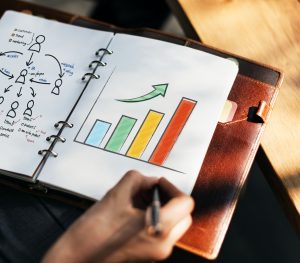Face 1: Type of Market

Adaptive learning technologies have entered the higher education, K-12 and corporate training markets and are predicted to both disrupt traditional delivery methods and be in greater demand in the near future.
Higher Education Market
According to NMC’s Horizon Report 2018, interest in the use of adaptive learning technologies is strong among administrators in higher education and the time-to-adoption horizon is predicted at two to three years. “92 percent of chief academic officers surveyed believe that it could improve student learning outcomes” (p.46). In 2015, a panel of higher education administrators surveyed by Ithanka S+R indicated that adaptive learning technologies were “the most promising initiative for improving the quality of student learning” (Kurzweil 2016).
Higher education institutions are both developing their own personalized education platforms to meet their specific needs or using technology resources available through education start-ups and companies (CogBooks, Smart Sparrow) and established educational publishing companies (Pearson, McGraw-Hill). National University has invested $20 million to create their own personalized education platform that uses adaptive learning and predictive analytics. Oregon State University currently uses Smart Sparrow’s adaptive learning technology for their virtual chemistry labs. In 2017, the University of Western Australia started using a web-based adaptive e-learning platform for beginner-level Italian courses. In addition, the Chan Zuckerberg Initiative and Melinda & Bill Gates Foundation are currently funding a development and adoption of adaptive learning technologies in a number of universities in the US (NMC).
K-12 Market
Noodle Markets Report published in 2017, which analyzed purchase orders and district demographic information in the US, reported spending on adaptive learning technologies and related training increased three-fold from 2013 to 2016. National spending in the K-12 market is currently at about $41 million a year. Districts investing the most money in adaptive learning technologies tend to be larger, wealthier, and in urban and suburban areas. However, less wealthy districts (higher poverty and lower household income) generally invest more of their total resources into adaptive learning than other resources. The majority of adaptive learning companies have seen overall growth. ALEKS (math) , i-Ready (math, reading), Istation (reading, math, Spanish) and ST Math control the largest share of the K-12 market. Policy Horizons Canada predicts strong growth in adaptive learning technologies as the demand for increased personalization increases.
Training Market (Corporate)
Workplace training represents a enormous global market and the industry spent over $362 billion USD in 2017 (Statista, 2018). L&D also significantly influences other larger markets (professional development, college education and secondary education) throughout the world. According to Technavio, the corporate training market in the US is predicted to grow by almost 10% between 2018 and 2022. Adaptive learning platforms using spaced and reinforced microlearning have entered the corporate training market and are displacing more traditional LMS training delivery. According to Technavio, “the growing usage of microlearning in corporate training will be one of the major trends gaining traction in the corporate training market during the next few years.” Personalized learning pathways are developed for employees based on their performance during short training sessions each day. Two key players in the market are Qstream and Axonify. These programs are a step away from a one-size-fits-all approach and offer a more modern and feel and higher level of engagement. Like other adaptive learning technologies, corporate solutions enable employers to easily track an employee’s progress and offer further support if needed (Bersin, 2017).
Back to the Cube Framework